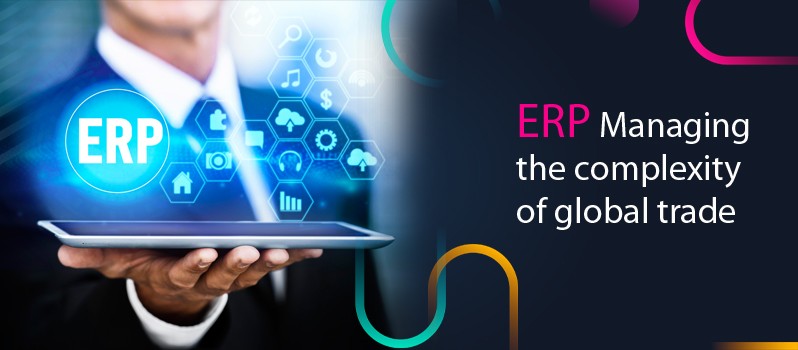ERP: Managing the complexity of global trade
ERP software is used by many large-scale businesses to manage their processes more effectively. In this blog article, the author discusses the importance of ERP and how it benefits companies who operate in a global market.
What is ERP Software?
It is a comprehensive platform that businesses can use to manage their overall business processes. This software can help businesses improve their efficiency and performance by automating many of the tasks that they typically have to do manually. It can also help businesses better understand their finances and operations by tracking all of the data related to their business.
Benefits of ERP Software
ERP software can help businesses manage the complexity of global trade. By automating business processes and tracking data, ERP can help reduce costs, speed up transactions, and bolster company security. Additionally, ERP can improve communication between departments and assist with marketing and pricing initiatives. To learn more about the benefits of ERP, browse through our list of 13 great benefits of ERP software.
ERP Software Key Benefits Some of the key advantages that can be gained from ERP systems include:
— ERP systems can improve distribution by ensuring that products are ordered in the right quantities, and by making sure there’s enough stock to cover potential demand shifts.
— ERP systems can improve distribution by ensuring that products are ordered in the right quantities, and by making sure there’s enough stock to cover potential demand shifts.
— Most ERP systems allow companies to track product data, including current pricing and discounts. This data helps determine which items are selling well and which aren’t. It’s also useful for keeping track of new product releases, whether they’re successful or not.
— Most ERP systems allow companies to track product data, including current pricing and discounts. This data helps determine which items are selling well and which aren’t. It’s also useful for keeping track of new product releases, whether they’re successful or not.
— A single ERP system can help a company reduce by-product waste and better quality control measures. By monitoring supply chains, the system can detect potential issues that may arise in production lines during different stages of processes.
How to Implement an ERP Software
In order to manage global trade effectively, businesses must implement an Enterprise Resource Planning software solution. It helps businesses manage their products, pricing, and inventory in a centralized location. By consolidating these crucial functions within one system, businesses can optimize their operations and reduce administrative costs.
Here are five tips for implementing an ERP system:
1. Select the right software. There are many different systems on the market, so it’s important to select the right one for your business. Make sure to research which features are necessary for your business and which ones you can afford to skip.
2. Create a roadmap. Before starting your implementation, create a roadmap detailing precisely what will need to be done in order to set up your ERP system. This will help you stay organized and on track during the process.
3. Establish a team plan. During the implementation process, it will be helpful to have a team of experts working together to make sure everything goes as planned. Establish a team plan early on and make sure everyone is on board with the plan.
4. establish communication channels. Throughout the installation process, it will be important to establish communication channels between team members and between the project manager and each department that will be involved in the implementation. This communication channel is crucial to ensure that everyone is on the same page and working towards a deadline instead of implementing an in progress system.
5. Create a roadmap detailing what needs to be done during installation. At each stage of the implementation process, it will be important to create a roadmap detailing what steps need to be taken at that point, as well as by whom. When creating this roadmap, it will help keep everyone focused on their tasks and on track with both their job responsibilities and deadlines.




